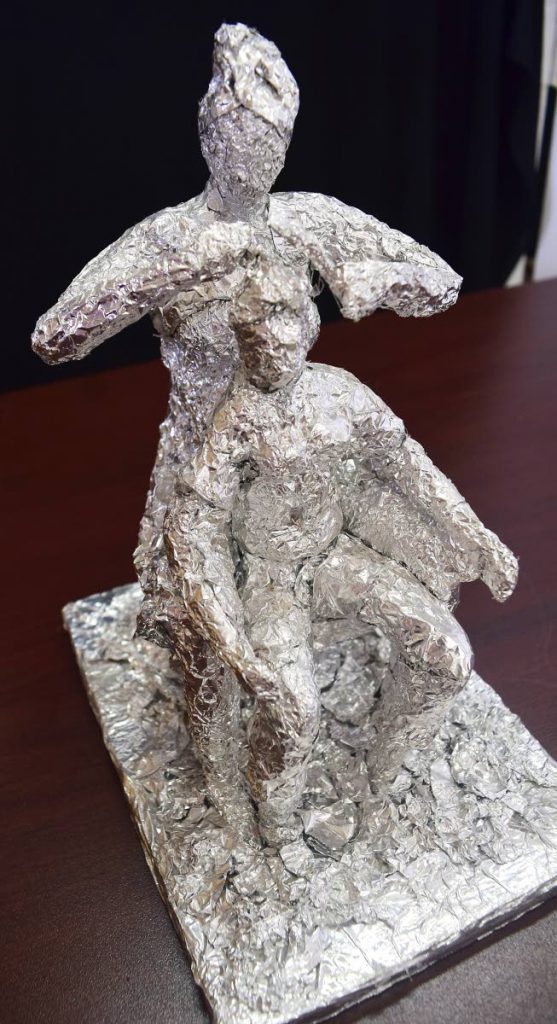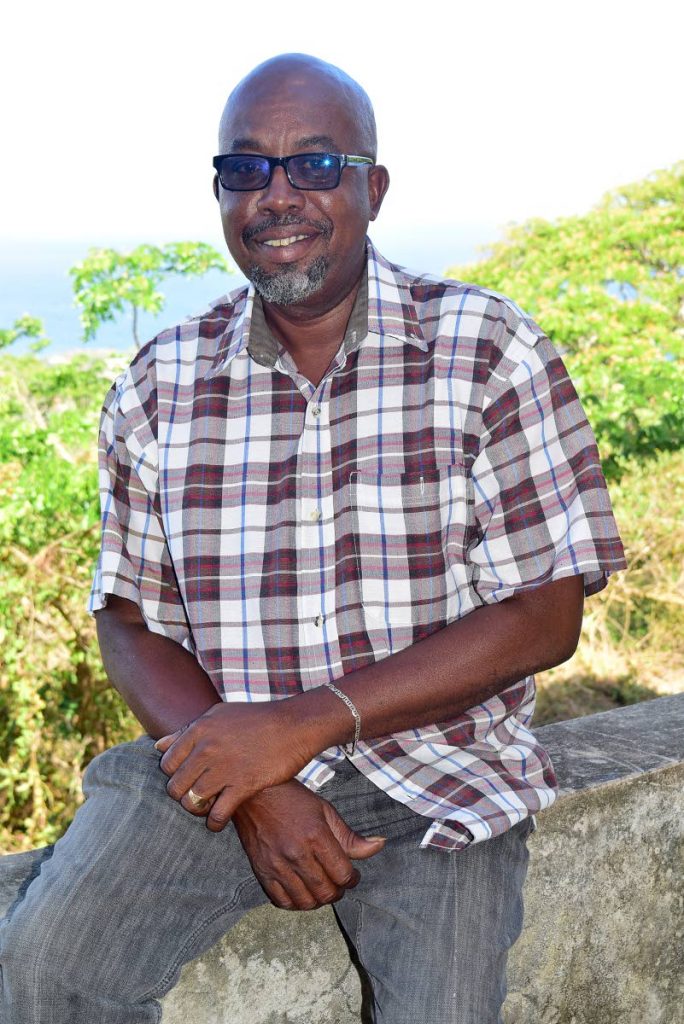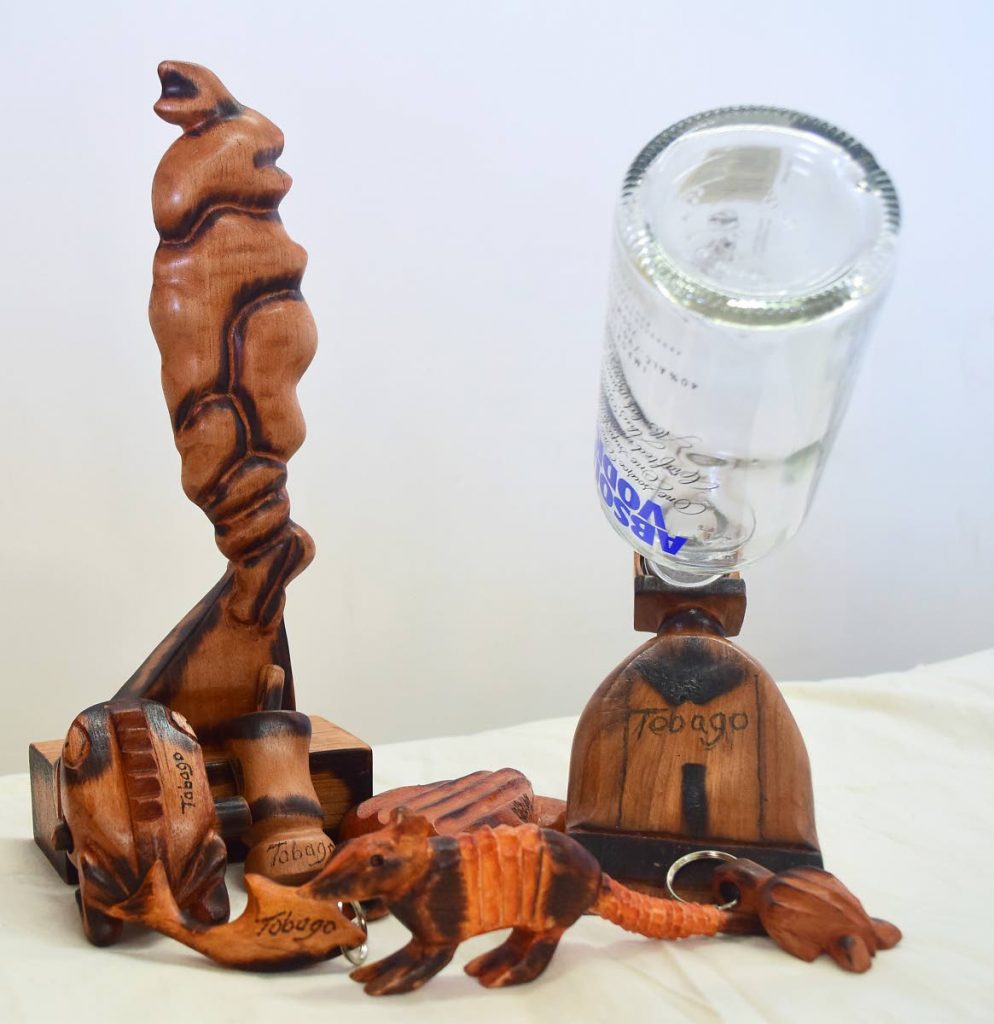For the love of Tobago

For an artist, inspiration is a vital as breathing, without a muse there may be no art.
For sculptor Wendel Moore, Tobago is his muse, his love for his island of birth inspiring his creations for over 30 years now.
“Basically, my pieces say ‘Tobago.’ I love this country so much that I like to promote Tobago in anyway and if it is through my art for example, like the little wooden pieces that I do, everything says ‘Tobago,’ from the turtle, the musical frog.
“I think I’m the only person in Trinidad and Tobago who actually makes a sculptured frog that mimics the song of a real frog,” Moore said in an interview.

His desire to pass on his knowledge is another driving force for him as an artist.
“I love to teach. One of my students he actually got a distinction... and usually the teachers would ask me if I could accommodate students when they are doing exams like CXC and CAPE. He (the student) did a piece for CAPE exam and got a distinction, a wooden piece about three feet tall, called the cocoa dancer and it was awesome,” he said proudly.
It was necessity, and ambition, that drove Moore to learn to sculpt. First to keep himself out of trouble as a as a teenager, and to earn an income.
“Instead of sitting down on the block and wasting time, I’d do a little thing (sculpting) at home. I first started with my uncle, he really dealt with black coral. Then black coral was hard to get ‘cause you have to dive in Speyside for it.”
So he experimented with other materials.

“More or less it was, I couldn’t get one material, so I tried this one, I always liked to experiment, from black coral to bone, coconut shell and then eventually to wood, it’s about the easiest medium to put your hands on.
“I used to go down by the guys with joiner shops and they used to give you ends of board, from there I used to take up my little pieces and make little money and that’s basically how I started after getting the idea from my uncle,” he said.
Necessity drove him to choose his current medium, foil.
“Through Community Development, I went to UWI in 2009-2011 and did a Certificate in Visual arts. UWI was another story again, everybody could have afforded to go by Samaroo’s and buy their materials, but I couldn’t afford it, so my medium for making my Marquette and stuff was foil and from then I just start transforming foil into big pieces,” he said.
As rough as the journey has been, the satisfaction of creation, driven by a love of Tobago, has been bolstered by recognition – from abroad.
In 2016, Moore travelled to Yorkshire, England where he spent a month, teaching students in Fine Arts classes how to sculpt using the foil.
“I did some good work out there, they were like ‘wow! this is cool!’ Everybody accepted it, that is actually where I did my first exhibition with foil. The exhibition stayed up for one year. I did Carnival characters - Jab Jab, Jab Molassie, Baby Doll. It was nine pieces, it was there in the museum for a year. It was well accepted,” he said, adding that he shown his works all over the Caribbean.
He compares this with the local reception.
“The problem I see for artists is like a king having no recognition in his own country, you have to leave and go elsewhere…What I see happening here, people just want to use you. They have a little function and they want it to look good, so they ask the artist to come in and they going to show his stuff and fill up the space and after that, that is about it,” he said.
“People out there (abroad) would ask you ‘where can I get it to buy’ but here they are just like it look so good, I could get one and want it for free. They don’t understand that you have to spend a lot, you spending time and money to really create this stuff, nothing doesn’t come for free.”
His work, also in wood, is sold at local craft stalls on the streets and sometimes the Division of Tourism sometimes buys his key rings for promotional materials on tours.
Moore suggested that to help artists make a reasonable living from their work, the respective divisions from the Tobago House of Assembly (THA) and Government must recognise that artists are not business people and should set up an agency to handle marketing, exporting and related aspects for them.
“Take my work, pay me for it and let me go about my business,” he said, suggesting that officials should really focus on offering training to artists and craftsmen to improve the quality of their work.
“…the idea of you just having workshops to discuss it does not really help and at the end of the day, no artist is really exporting works other than a minority...All he (the artist) know is to make a thing to get something sell to get a dollar to go home and when you take him and carrying him in a conference whole day, he misses out a day’s pay and all he getting is a plate of food and a pen and a paper.”
Moore also advised authorities to pay attention to the fact that not all tourists are supporters of the local craft industry.
“The tourists, especially the cruise ship tourists, don’t buy anything. Here is what they will buy - a Carib, Coca Cola, water basically. When it comes to craft, it is very rare that they purchase any… tourists who stay at the hotels, they will by craft and art…”


Comments
"For the love of Tobago"